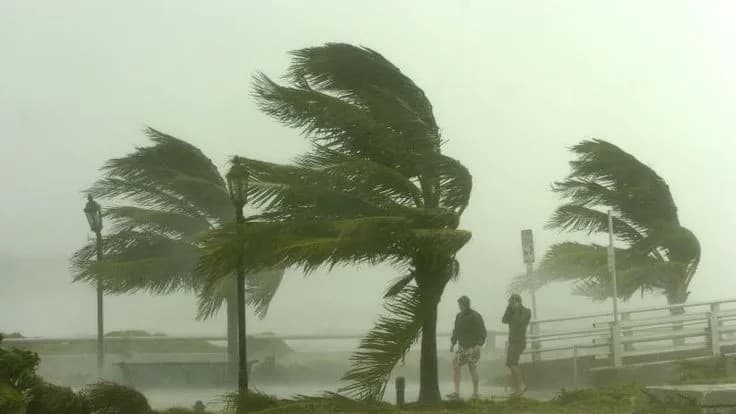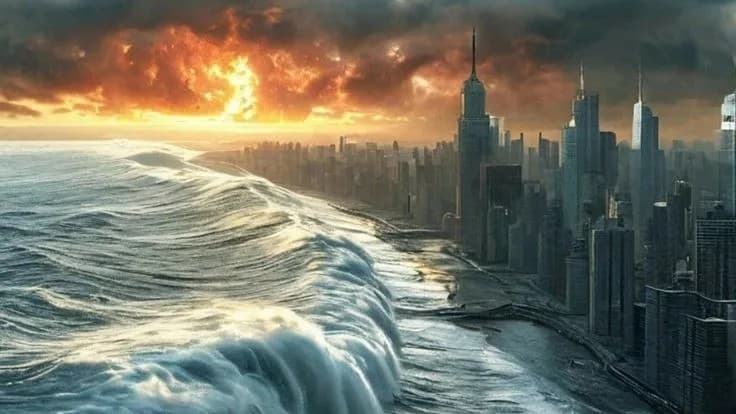🌪️ A Storm of Destruction — Hurricane Melissa Hits America
When Hurricane Melissa, born over the Caribbean Sea, hit the United States, chaos followed. With wind speeds reaching 280 km/h, the storm devastated Jamaica, Haiti, and Cuba before striking the American coast. At least 25 people have died, and many are missing. The United Nations has warned that if climate change is not controlled, such storms will become more common in the coming years. Melissa is a grim reminder of how fragile human life is in front of nature’s fury and how urgently the world must act to protect the planet.

Carrying a message of devastation, the furious storm crashes into the American coast.
Hurricane Melissa has unleashed chaos across America and nearby nations, leaving people terrified.
The storm, which formed over the Caribbean Sea, struck the southern coast of the United States with roaring winds, thunderous skies, and scenes of destruction everywhere.
Strong winds, giant waves, and nonstop rain have drowned entire neighborhoods underwater.
Melissa’s speed was terrifying — winds up to 280 km/h shook cities to their core.
Trees were uprooted, rooftops ripped away, and power lines burst into flames.
Vehicles were swept off the roads, and many people were stranded on rooftops waiting for rescue teams to arrive.
💥 Jamaica, Haiti, and Cuba Face the Worst Destruction
Jamaica is among the hardest-hit regions.
Powerful winds and relentless rainfall have brought the nation to a standstill.
So far, 25 people have died, and hundreds are reported injured.
Prime Minister Andrew Holness has declared a national emergency, closing all airports and suspending public transportation.
In southern Jamaica, floods and landslides have destroyed major roads, cutting off several towns.
Rescue teams are using boats to reach stranded people and move them to safer areas.
In Haiti, the situation is even more tragic.
Heavy flooding has claimed at least 25 lives, with 18 others missing.
Thousands of homes have been swept away, and crops are completely ruined.
People are struggling without food and clean drinking water.
In Cuba, the storm has also caused severe damage.
Several cities are without electricity and mobile networks.
The government has called in the army to support rescue operations, while citizens are being moved to higher ground for safety.
🌊 Storm Path and New Warnings
According to meteorologists, the storm’s center is currently about 125 miles south of Kingston and moving westward.
For the next 24 hours, strong winds and heavy rain will continue.
Experts warn that landslides, power outages, and communication failures could increase in the coming days.
🌎 Climate Change — A Warning From Nature
United Nations Secretary-General António Guterres has said that Hurricane Melissa is a clear result of global warming and climate change.
He warned,
“We are now living in an age where nature is fighting back. If we don’t act now to protect our planet, future generations will not forgive us.”
According to the World Meteorological Organization, the year 2024 was the hottest year ever recorded, with global temperatures rising 1.55°C above average.
Warmer oceans are fueling stronger and more dangerous storms like Melissa.
🇺🇸 Relief Efforts Across the U.S.
In the United States, Florida, Georgia, and North Carolina are already feeling Melissa’s impact.
Thousands of homes have been evacuated, and families have taken shelter in relief camps.
Emergency teams, similar to India’s NDRF, have been placed on high alert.
The White House released a statement saying:
“We are providing all possible assistance to every affected state. This is a time for unity and support.”
Photos and videos flooding social media show roads turned into rivers, people stranded on rooftops, and helicopters rescuing survivors.
Schools, hospitals, and markets in many areas remain completely closed.
🔚 Conclusion
Hurricane Melissa has once again reminded the world how dangerous it is to disturb the balance of nature.
Saving our planet is not just the job of governments — it’s the duty of every human being.
If we don’t change now, future storms will only grow stronger and more destructive.
🖊️ Report by: Dhananjay Singh, International Desk
❓ FAQ: Important Questions About Hurricane Melissa
1. Where did Hurricane Melissa begin?
➡️ It formed over the Caribbean Sea, hitting Jamaica, Haiti, and Cuba before crashing into the southern coast of America.
2. How strong were the winds?
➡️ Melissa’s winds reached up to 280 km/h, placing it in Category 5 — the most dangerous level of hurricanes.
3. Which countries suffered the most damage?
➡️ The worst-hit regions include Jamaica, Haiti, Cuba, and the southern U.S. coastal states.
4. How many lives have been lost so far?
➡️ Around 25 people have died, with 18 still missing, and many injured.
5. Is this storm related to climate change?
➡️ Yes. According to the U.N. and climate experts, rising global temperatures and warmer oceans are making storms like Melissa even more powerful and frequent.
Dhananjay Singh
Professional Content Writer, Researcher & Visionary Storyteller
"तरक्की को चाहिए नया नज़रिया—और यह नज़रिया शब्दों से शुरू होता है।"
More from Dhananjay Singh →

